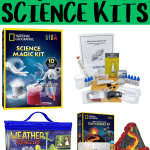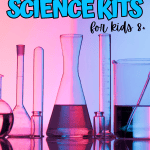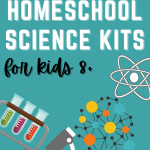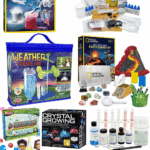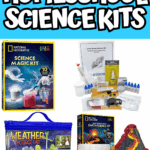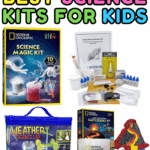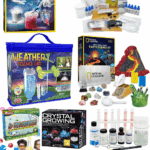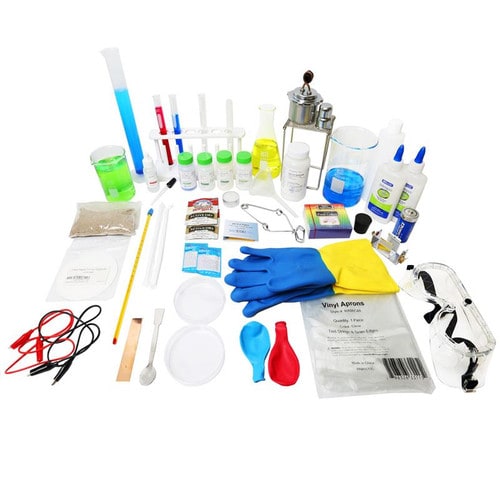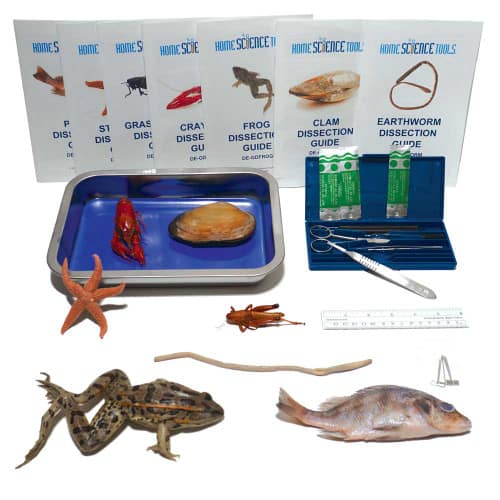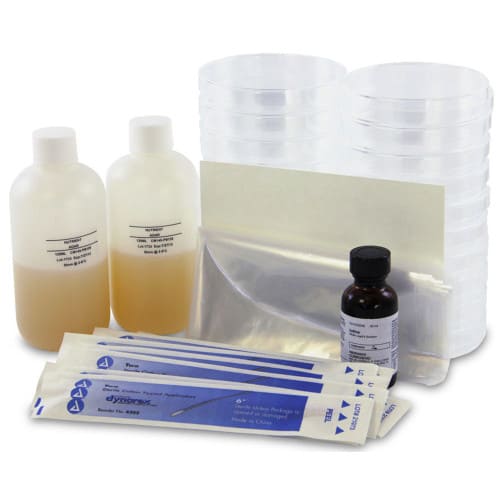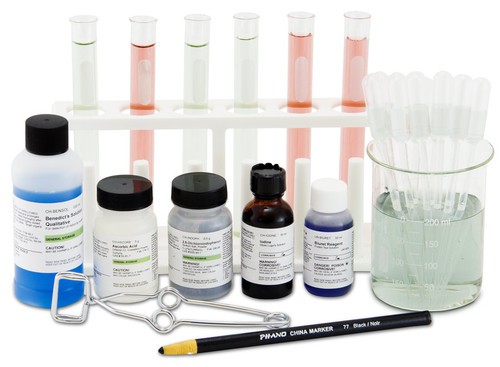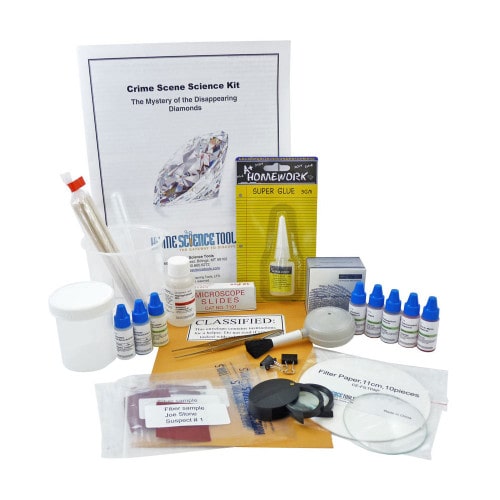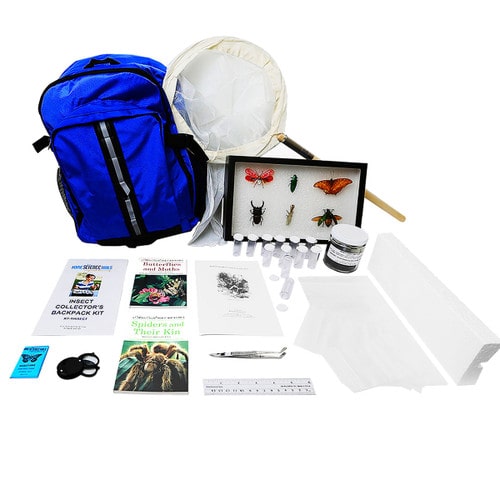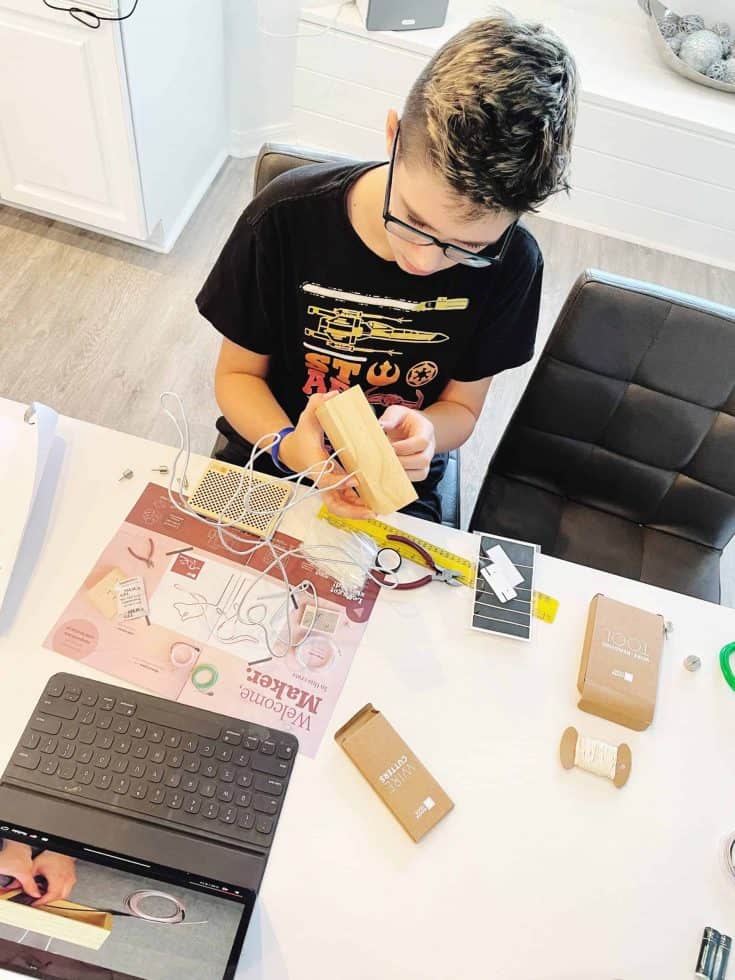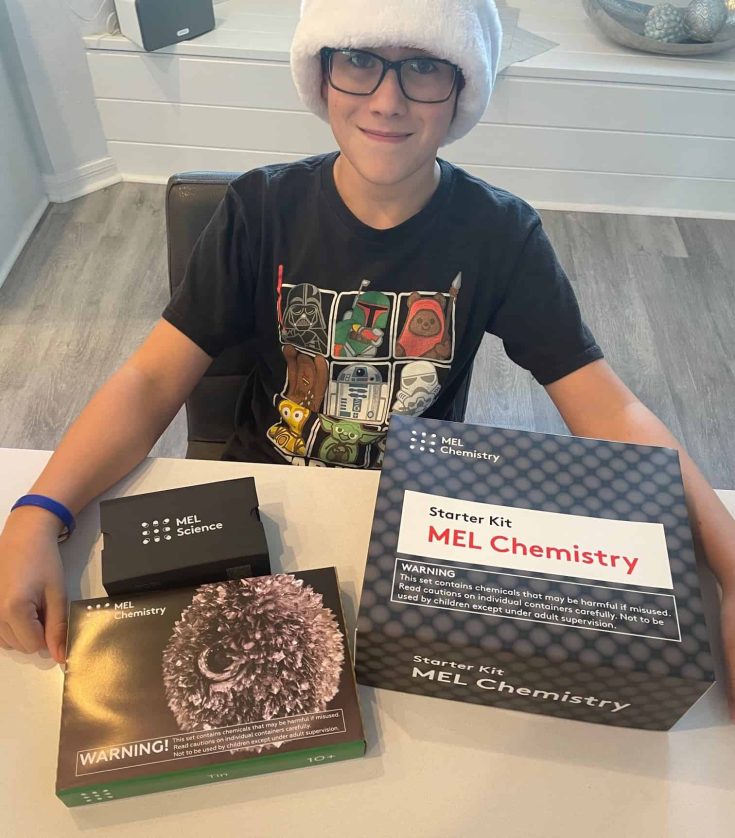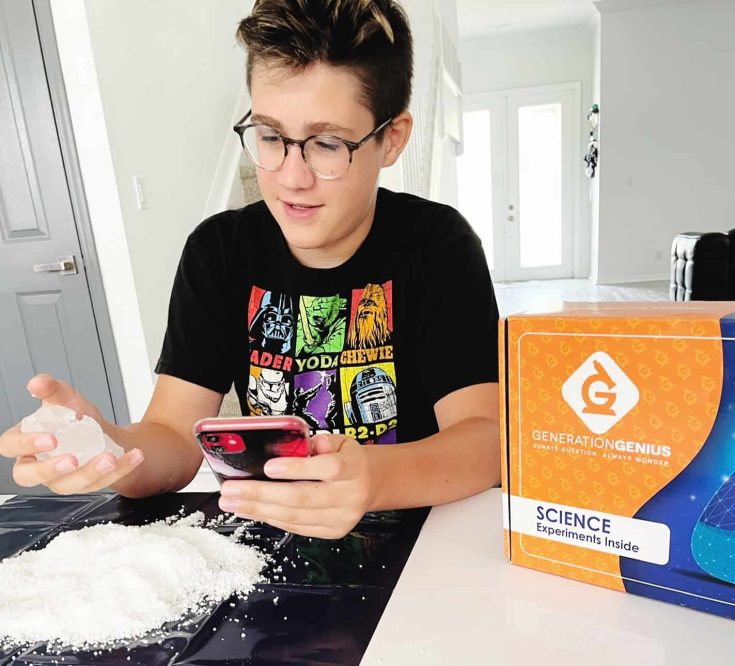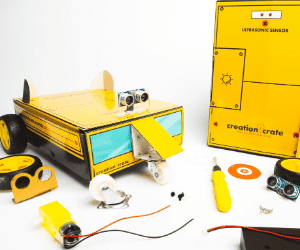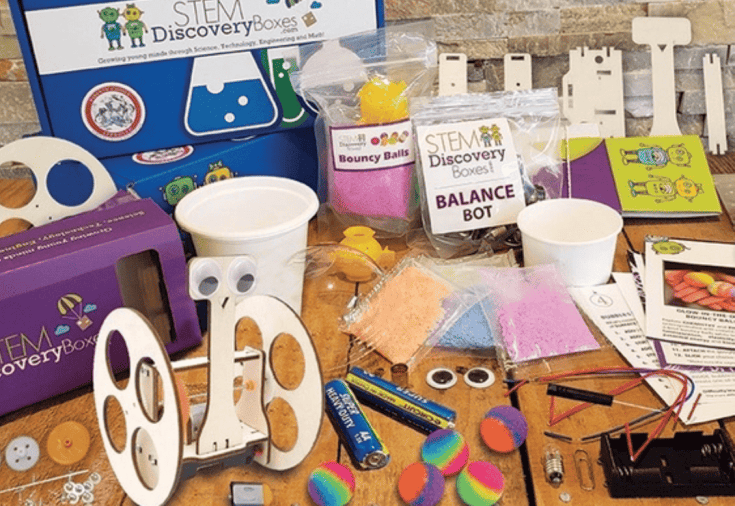Homeschool Science Kits That Actually Work (and Keep Kids Engaged)
Finding the right homeschool science kits has made hands-on learning way more manageable and a lot more fun for both of us.
Science never came easily here, so I’ve always looked for ways to make it more interesting. STEM kits, experiments, and real lab tools helped turn abstract lessons into something my son could actually see, build, or test himself.
Whether it was growing bacteria, building circuits, or dissecting a frog (yes, really), these science kits have made a big difference in how we learn at home.
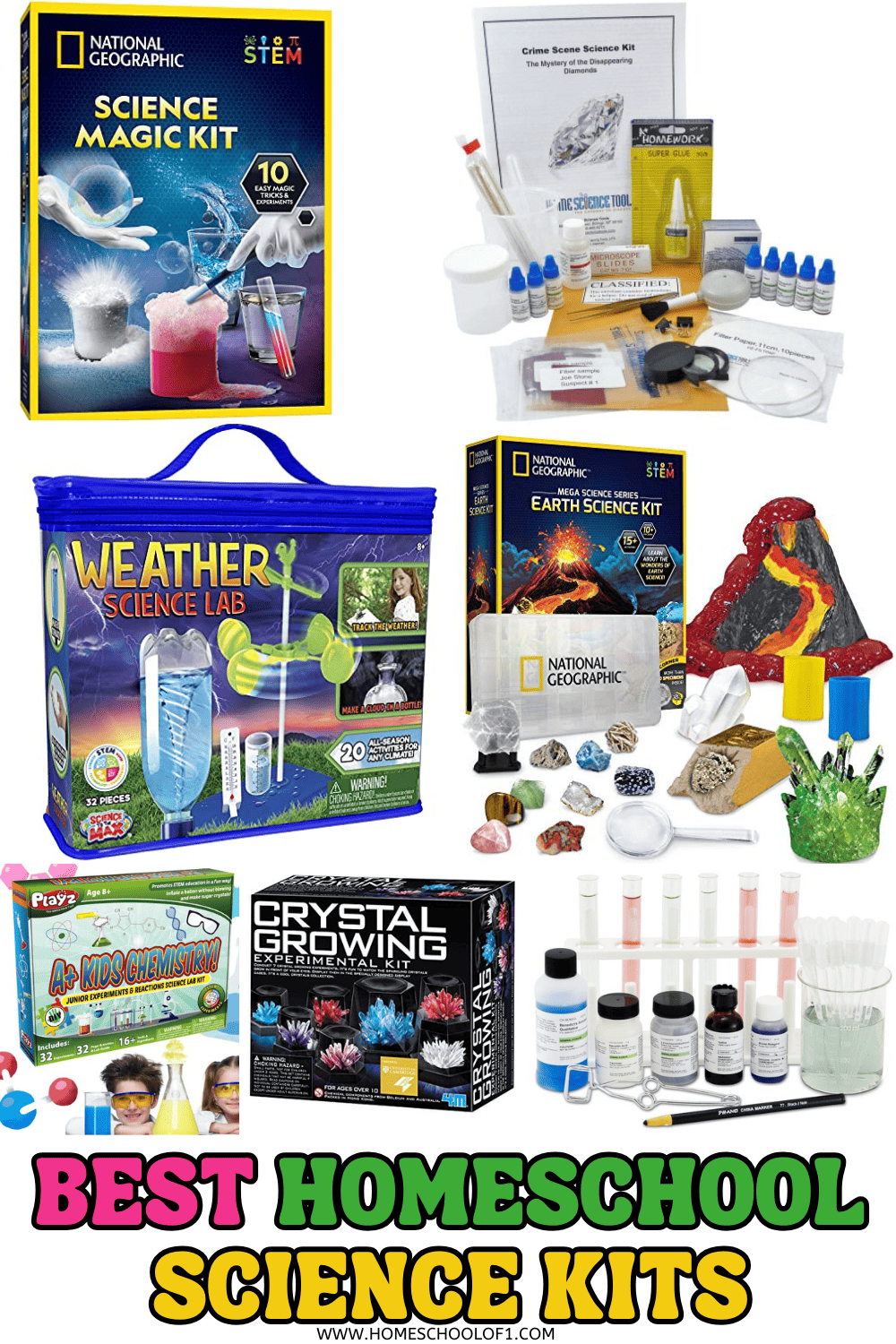
**This post may contain affiliate links. As an Amazon Associate and a participant in other affiliate programs, I earn a commission on qualifying purchases.**
What to Look for in a Good Homeschool Science Kit
Choosing a science kit for your homeschool really depends on your child’s age, interests, and what you’re hoping to teach. Some kits dive deep into chemistry or biology, while others give a broader mix of STEM topics.
We’ve had the most success using the Home Science Tools kit selector, it helps narrow down options by grade level and subject, which saves time when you’re not sure where to start.
If you’re building a full unit, you can also pair these kits with our free science worksheets or elementary science activities for more hands-on learning.
Science Kits That Actually Got Used at Our House
Science should be hands-on and fun, not just something to check off the list. These kits helped turn “just another lesson” into something my son actually looked forward to.
Some focus on chemistry or engineering, others cover a bit of everything. Whether you’re after a birthday gift for a science lover or a hands-on way to teach science at home, these are the ones we’ve used and would recommend.
This chemistry kit is ideal for middle schoolers ready to experiment with real lab materials.
It includes 27 hands-on activities, such as creating polymer bouncy balls, testing acids and bases, and exploring states of matter.
The high-quality lab equipment and protective gear make it easy for kids to safely experiment at home while gaining a deeper understanding of chemistry concepts.
For kids interested in biology and anatomy, this dissection kit provides everything needed to explore the structures of different organisms.
It includes a set of preserved specimens, such as a fish, frog, and earthworm, along with a 17-piece tool set and step-by-step guides.
The detailed instructions help students understand anatomy without needing prior experience, making it a great addition to a homeschool biology curriculum.
This kit allows kids to culture bacteria at home, testing how different surfaces, air particles, and even household cleaners impact bacterial growth. It includes prepared agar, Petri dishes, and a full bacteria-growing guide.
This is a great way to introduce microbiology concepts while reinforcing the scientific method through real-world experimentation.
The hands-on nature of this kit makes it useful for science fair projects and independent study.
This kit helps kids explore the chemistry behind everyday foods by testing for proteins, vitamins, and other nutrients.
Using lab-grade equipment and easy-to-follow instructions, students can conduct experiments that bridge chemistry and nutrition.
By working with familiar foods, kids see the direct application of chemistry in their daily lives, making the subject more relatable and engaging.
This forensic science kit introduces students to investigative techniques like fingerprint analysis, chromatography, and blood type testing.
Through hands-on experiments, kids can apply chemistry and biology principles while solving a mystery case.
The kit provides real lab materials, giving students a deeper appreciation for how science is used in forensic investigations.
This kit includes everything needed for kids to collect, observe, and display insects. It comes with a high-quality net, magnifying glass, and a display case for specimens.
Exploring the insect world through hands-on collection encourages curiosity about biology and ecosystems.
This is a great option for kids who enjoy nature studies and pairs well with insect life cycle worksheets for a more structured learning experience.
This kit is a great all-in-one option for kids who love experimenting across different fields of science. It includes a mix of hands-on activities covering chemistry, physics, and earth science, making it a well-rounded introduction for elementary and middle school students.
If you're not sure what area of science will interest your child most, this kit offers a little bit of everything.
We’ve found that open-ended kits like this work well for independent exploration. Kids can pick an experiment that interests them, and the step-by-step instructions make it easy to get started.
This is a solid choice for families looking for a broad science kit rather than one that focuses on a single subject.
For kids fascinated by chemistry, this kit provides over 30 experiments that introduce foundational concepts in a hands-on way.
It covers topics like acids and bases, chemical reactions, and molecular structures.
One of the best parts of this kit is that it includes real lab equipment, not just disposable plastic pieces. The experiments are simple enough for younger kids to follow but detailed enough to challenge older students.
If you're looking for a homeschool chemistry supplement that doesn’t require a full curriculum, this kit is a great starting point.
This kit is a great way to bring meteorology to life with 20 hands-on weather experiments. Kids can track changes in the atmosphere, create their own barometer, and simulate different weather conditions.
We used this as a supplement when covering weather in our homeschool science lessons, and it made abstract concepts much easier to understand. The experiments help kids see weather in action rather than just reading about it, making it a great fit for visual and hands-on learners.
Pairing this with our free weather worksheets helped reinforce the concepts even more.
This kit is one of the best for young geologists because it covers multiple earth science topics, including volcanoes, crystals, and rock formations.
The kit includes all the materials needed for kids to grow their own crystals, dig for gemstones, and create a volcanic eruption.
If your child is interested in rocks, minerals, or geology, this is a fantastic way to make those topics more engaging.
It also works well for multi-age learning—kids as young as six can participate, but older students will also enjoy the experiments.
This chemistry set takes a unique approach by framing the experiments as "magic tricks" that reveal scientific principles.
Kids can perform ten hands-on experiments that demonstrate chemical reactions and molecular changes, like color-changing liquids and disappearing solutions.
We love this kit because it’s a great way to hook kids who aren’t naturally interested in science.
The magic theme makes it feel less like a lesson and more like an interactive activity, which is especially helpful for younger kids.
This is a great option for younger kids who love nature and want to learn about ecosystems in a hands-on way.
The kit allows kids to build and decorate their own terrarium, then observe the plants grow over time.
We used this as part of a botany unit, and it was a great way to reinforce plant life cycles and environmental science concepts.
It’s also a fun, low-maintenance science project that doesn’t require daily supervision.
This is an excellent choice for younger scientists, offering 21 simple experiments designed for kids aged four to eight.
It covers basic chemistry, physics, and biology concepts in a way that’s easy to understand.
Hands-on learning at this age is key, and this kit makes it easy for young kids to experiment safely while still learning real scientific concepts.
The instructions are clear, and most experiments use common household materials, making it a convenient and engaging introduction to science.
This kit is perfect for kids who love cooking and science. It combines virtual reality with real-life kitchen experiments, teaching kids about food science in a fun and interactive way.
The kit includes VR goggles and a series of experiments that explore concepts like emulsification, chemical reactions in cooking, and how different ingredients interact.
For kids who enjoy hands-on activities in the kitchen, this is a creative way to introduce scientific thinking through everyday experiences.
This kit is a great introduction to engineering and renewable energy. It allows kids to build twelve different solar-powered robots, helping them understand how solar energy is converted into motion.
Building the robots encourages problem-solving and hands-on creativity while reinforcing basic physics and engineering principles.
This is a fantastic kit for kids who enjoy building things and experimenting with mechanical concepts.
This kit allows kids to explore the science of crystal formation through seven experiments. They can grow their own crystals and observe how different conditions affect their growth.
The display cases included make it easy for kids to showcase their results, turning the experiments into a longer-term project that encourages patience and observation skills.
This kit is great for children who enjoy science with a creative, artistic element.
Monthly Science Kits for Kids
If you're looking for a way to bring consistent, hands-on science experiments into your homeschool, a monthly subscription box is a great option.
These kits take the guesswork out of planning science activities, delivering engaging experiments and projects right to your door.
Whether your child is interested in chemistry, engineering, coding, or general STEM exploration, these science kits provide structured learning in an interactive format.
We've tried several of these subscriptions, and they offer a fun way to keep science exciting throughout the year.
KiwiCo is one of the best-known STEM subscription services, offering hands-on projects that introduce kids to engineering, physics, and design concepts.
Each box is designed for a specific age range, from preschoolers to teenagers, with well-structured activities that make science feel more like play.
We've used KiwiCo in our homeschool, and it's a great option for kids who love to build, experiment, and create. The kits come with high-quality materials and detailed instructions, making it easy for kids to complete projects independently.
We’ve reviewed several of their crates, including:
Mel Science focuses primarily on chemistry, delivering real lab experiments with professional-grade materials.
These kits go beyond basic science activities, providing an immersive learning experience with step-by-step virtual reality lessons that help explain the chemistry behind each experiment.
We've found Mel Science to be a great choice for middle school and high school students who are ready for more advanced experiments.
The experiments are safe and well-organized, making them a practical option for homeschoolers looking for structured, high-quality chemistry lessons.
You can read more about why we love it with our Mel Science subscription review.
Generation Genius combines hands-on science experiments with engaging educational videos, helping kids understand core scientific concepts in an interactive way.
The lessons align with science standards, making them a great supplement to any homeschool curriculum.
What makes this subscription unique is its integration of high-quality instructional videos alongside experiments.
If your child learns best with visual guidance, this kit provides a structured approach to hands-on science learning.
You can find out more about why we love the Generation Genius science kits in our review.
Creation Crate is a great option for kids interested in electronics, coding, and robotics.
Each month, students receive a hands-on STEM project that introduces them to basic programming and circuitry, helping them develop problem-solving skills while learning about real-world technology.
This subscription is ideal for older students who want to explore engineering and computer science through hands-on projects.
It builds on previous lessons, meaning kids continue to develop their skills with each box, making it an excellent long-term STEM learning option.
STEM Discovery Boxes offer a variety of hands-on experiments and engineering challenges, covering everything from chemistry and physics to robotics and environmental science.
Each box includes a mix of projects designed to engage kids in problem-solving and creative thinking.
These boxes are a great way to explore different areas of science each month.
If your child enjoys a mix of STEM topics rather than focusing on one subject, this subscription provides variety and keeps learning fresh.
Last Updated on 8 April 2025 by Clare Brown

